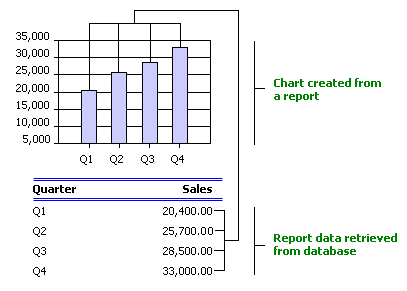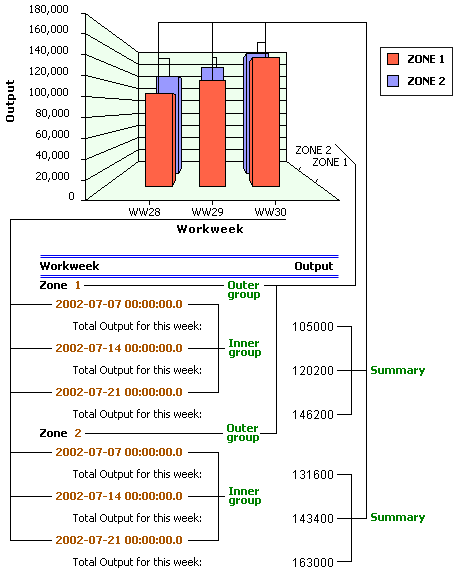

This section describes how data is represented in a chart.
A single chart (except the Stock type) can generally display two- or three-dimensional data, each dimension corresponding to an axis of the chart. A chart displaying three-dimensional data includes the three axes: category axis, series axis, and value axis. A chart will not contain the series axis if it only shows two-dimensional data. The data field displayed on the value axis must be of numerical type. If the chart is of a 3-D subtype, or any subtype of the Pie, Radar, Gauge, or Surface, its value axis can only show one data field; otherwise the value axis can show more than one data field.
A single chart can be based on only detailed records of a dataset, that is, no summary information is to be revealed by the chart. This kind can only display two-dimensional data. For example:

You can also create a chart containing summary information. This kind of chart can display either two- or three-dimensional data. The following is an example showing a three-dimensional-data chart. Notice that the data field in the series axis always holds a higher group level (outer group) than that in the category axis.

If you would like the value axis to display more than one data field, the data fields must be of a same level, that is, all these fields are DBFields or formulas of the dataset (for two-dimensional-data chart), or they are summaries of a same group level (for three-dimensional-data chart).
With respect to a Stock chart, it is designed specially for representing stock trends. You can think of it as a two-dimensional-data chart which must show more than one data field in its value axis. The number of data fields is decided by the subtype of the Stock chart.
A combo chart is different from a single chart in that it has two value axes -- the primary value axis and the secondary value axis, and each value axis can represent one or more subtypes. You can add one or more data fields to any subtype of the two axes and all data fields in the two value axes must be of a same level. Notice that some subtypes are not applicable for combo charts.